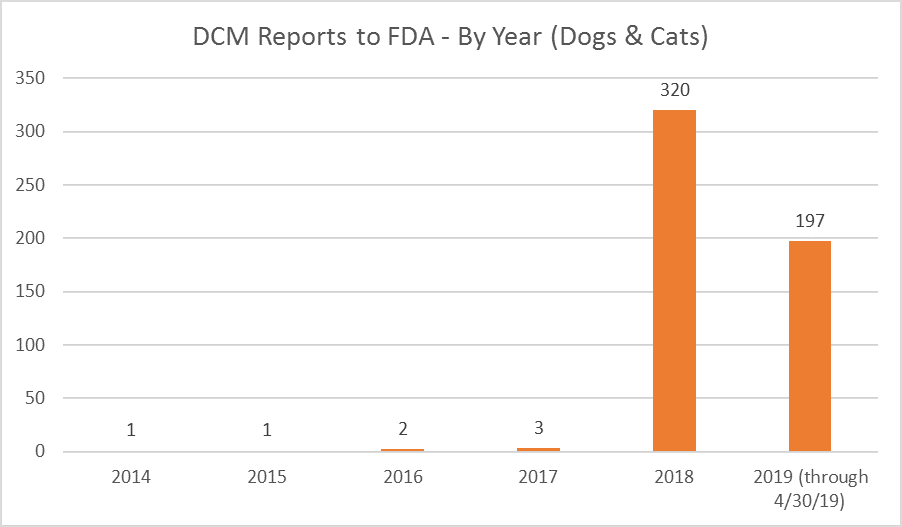SIGN IN
BLOG
Search Blog
Latest Posts
- Brain Boosting Activities for Happy Dogs (1)
- 8 Ways to Celebrate National Puppy Day in Central Oregon (1)
- The Story Behind the Store (1)
- Top 7 Tips for Hiking With Your Dog (1)
- These Quotes For Animal Lovers Will Make Your Heart Happy (1)
- Kidney Failure...Can You Help? (1)
- 5 Halloween Safety Tips For Your Pets (1)
- Let's Talk About Pet Obesity (1)
- How to Read an Ingredient List (1)
- What Can Pets Do For You? (1)
- Thanksgiving Foods You Should Not Feed Your Dogs and Cats (and What They Can Eat) (1)
- Why Should I Walk My Dog? 6 Reasons to Get Outside (1)
- 6 Natural Ways To Keep Outdoor Pests from Pets (1)
- Evangers Canned Dog Food Recall Gives Rise to More Questions Than Answers (1)
- Finding a Lost Dog or Cat (1)
- Raw Food vs. Kibble (1)
- When to Give Up on Your Pet Food (1)
- What You Should Do in a Pet Emergency-April is Pet First Aid Month (1)
- Cheatgrass in Central Oregon (1)
- Choosing the Right Dog Food (1)
- 6 Reasons Why You Should Have a Cat in Your Home (1)
- 4 Ways to Help with Your Dog?s 4th of July Fireworks Anxiety (1)
- 11 Summer Tips for Dogs Or - How to Keep Your Dog Cool During Summer (1)
- 10 Tips to Prevent Your Dog from Getting Lost During Summer (1)
- Water Safety Tips for Dogs (1)
- Why You Should Add Mixers to Your Dog or Cat Food (1)
- What are "pit bulls"? In honor of National Pit Bull Month (1)
- Tips for Keeping your Pet Safe During Winter (1)
- Holiday Safety Tips for Cat and Dog Owners (1)
- New Year's Resolutions for Pet Owners (1)
- 8 Reasons Your Pet Makes the Best Valentine (1)
- Dental Care for Dogs and Cats: Why You Should Take Care of Your Pet's Teeth (1)
- 5 Things You Might Not Know About CBD for Dogs (1)
- 9 Amazing Pet Products Made in Oregon (1)
- PETS WELCOME! CENTRAL OREGON A DOG-FRIENDLY VACATION PARADISE (COVA) (1)
- Spring Cleaning: 8 Awesome Tips for Cat and Dog Owners (1)
- What You Need to Know About Pet First Aid (1)
- How to Protect Your Dog From Ticks (1)
- 9 Tips for Moving with Your Pet [Curated] (1)
- 10 Amazing Pet Products Made in Oregon (1)
- 10 Summer Tips for Dogs (1)
- 6 Things to Pay Attention to as Your Dogs and Cats Get Older (1)
- Grain Free Diets (1)
- The FDA's Investigation into DCM (1)
- Why You Should Add Mixers to Your Dog or Cat Kibble (1)
- Moving with a Pet: Rules and Regulations you Need to Know [Curated] (1)
- Does My Dog Need Grain Free Kibble? (1)
- Three Marketing Phrases that May Not Mean What You Think (1)
- Why Does my Cat do That? (1)
- 8 Things You Didn't Know About CBD Oil for Dogs (1)
- 12 Ways to Go Green With Your Pet (1)
- Best Holiday Gifts For Your Four-Legged Family Members (1)
- So you adopted a dog! Now what? (1)
- How to Crate Train Your Puppy or Dog (1)
- Everything You Need to Know About Moving to Bend With Your Dog (1)
- 5 Ways to Prevent Pet Poisoning (1)
- How to Succeed When Adding a Puppy to the Family (1)
- Moving to Bend: Pet Safety Tips for Central Oregon (1)
- Why Tethering is Bad for Dogs (1)
- Adopting Pets in Bend: Where to Rescue Cats and Dogs in Central Oregon (1)
- So you?re adopting a cat! Now what? (1)
- The 5 Things the FDA is Actually Saying about Food and DCM (1)
- What the FDA Actually Said: Are DCM Rates on the Rise? (1)
- What the FDA Actually Said: Is DCM Reported in Unexpected Breeds? (1)
- What the FDA Actually Said: Are Boutique Foods to Blame? (1)
- Industry Statement on DCM: Nulo Pet Food (1)
- Industry Statement on DCM: Zignature (1)
- Industry Statement on DCM: FirstMate (1)
- Pet Fire Safety in Central Oregon (1)
- Everything You Ever Wanted to Know About Raw Diets for Cats and Dogs (1)
- 2 Minute Read - Pig Ears, Salmonella, and You (1)
- Camping Essentials for Your Dog (1)
- How to Help Your Cat Adjust to His New Home (1)
- 4 Ways to Help Prevent Cancer in Your Dog (1)
- Christmas Presents Your Dog Will Love (1)
- Frequently Asked Questions About Getting Your Dog's Nails Cut (1)
- Pet Dental Health: Does Your Dog or Cat Have Bad Breath? (1)
- 10 Delightful Doggie Daycares, Dog Walkers, Boarding Facilities and In-Home Pet Care Services in Bend (1)
- 24 Deliciously Dog-Friendly Restaurants in Bend (1)
- How Much Can My Dog Carry In Their Backpack? (1)
- Corn Has No Place In Pet Food (1)
- Choosing the Right Large Breed Puppy Food (1)
Tags
- Cat (34)
- Contests (1)
- Dog (70)
- DCM (7)
- Health and Safety (1)
- Health and Safety (16)
- Health and Safety (2)
- Holidays (5)
- Health and Safety (1)
- Products (8)
- Health and Safety (1)
- Health and Safety (6)
- Events (2)
- Health and Safety (1)
- Health and Safety (15)
- Health and Safety (1)
- Health and Safety (1)
- recall (1)
- salmonella (1)
- Health and Safety (4)
- History (1)
Archives
- September 2024 (1)
- May 2023 (81)
What the FDA Actually Said: Are DCM Rates on the Rise?
Posted on 05.18.2023On 27 June 2019, the FDA updated their investigation into a potential link between certain diets and canine DCM. The update is about 14 pages long and has been updated to include charts and name brands. We dug into it and pulled out 5 things that the FDA was actually saying about the investigation.
The rest of the update is simply documenting the data that they have found; a lab report. It’s interesting information, but because we don’t know the baseline occurrence of the disease in the general pet dog population, we should all be very careful about drawing conclusions.
The update does bring up some big questions though, and we will be using the FDA’s actual data to try and see if we can answer them.
Are DCM Rates on the Rise?
TL;DR: No one really knows.
Straight up, I’m not sure that we can say rates of occurrence of DCM are on the rise. Let’s walk through the facts starting with this chart on reports of DCM per year.

Here are some related quotes from various parts of the report:
“It’s also important to note that the FDA states that most of the 77 million pet dogs in the United States have been eating pet food without apparently developing DCM.”
“It’s not known how commonly dogs develop DCM.”
“Another puzzling aspect of the recent spike in DCM cases is that they have occurred just in the last few years.”
“We suspect that cases are underreported because animals are typically treated symptomatically”
“Because the occurrence of different diseases in dogs and cats is not routinely tracked and there is no widespread surveillance system like the Centers for Disease Control and Prevention have for human health, we do not have a measure of the typical rate of occurrence of disease apart from what is reported to the FDA.”
So are rates of occurrence of DCM on the rise? Honestly, no one knows. The FDA does not understand how often DCM occurs in dogs but they tell us that the vast majority of the 77 million pet dogs in the US are eating pet food without a problem.
If we don’t know how often it happens, and seeing as the FDA “suspect[s] that cases are underreported” it would make sense that the actual occurrence of DCM is higher than previously believed. To pin the blame for a sudden “surge” of DCM reports on grain free foods is disingenuous at best, especially when we have no idea how often it occurs. It may simply turn out that DCM is much more prevalent in all dogs than was previously believed and diet has nothing to do with it.

 Our Best Friend
Our Best Friend The Internet's Favorite Animal
The Internet's Favorite Animal